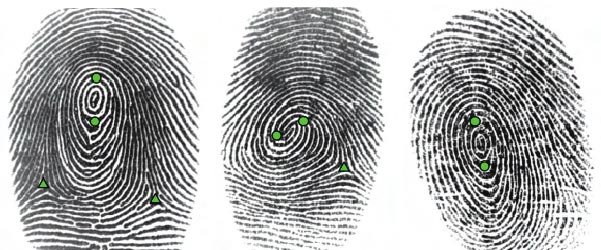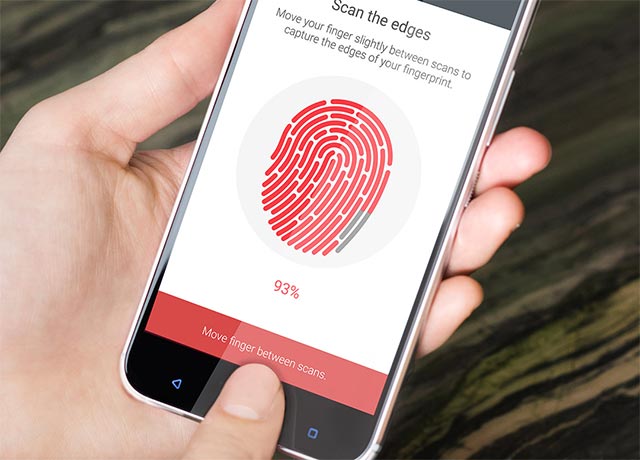The researchers successfully developed capacitive image sensors with high resolution and sensitivity
We all know that fingerprints can be an important factor in identifying personal access as well as being used in many other complex tasks. But the current fingerprint scanner can still be easily fooled with fake fingerprints or even another fingerprint with a similar structure. Recognizing this drawback, a team of researchers in Japan has successfully developed a capacitive image sensor with extremely high resolution and sensitivity, which can be applied in scanner systems. Fingerprint for extremely high speed and accuracy.

- Researchers use computer vision to better understand optical illusion
Specifically, this advanced capacitive image sensor has such high sensitivity and resolution that when used in fingerprint scanners, it can show more of the fingerprint structure's whirlpools and help discovering pores between fingerprint lines - it can be said that the detail has reached its maximum.
The prototype of this sensor was actually presented for the first time in December at the IEEE 2018 International Electronics Equipment Conference in San Francisco, California. A detailed description of the sensor was published in the 2018 International Electron Devices Meeting (2018 International Electron Devices Meeting). However, there are still some issues that researchers have to overcome, so it is not until the end of last week that the authors can fully present new documents and test results of this project at one The conference was organized by Japan Television Information and Image Information Institute (ITE).

- [Infographic] How does IIoT impact key industries?
"The most important point of the sensor has been developed by researchers is the high capacitive sensitivity," said Shigetoshi Sugawa, professor at the Technical College of Tohoku University, who led the research. know.
'We all know that capacitive touch is used in many electronic devices today, such as touchscreen phones or computer touchpads (trackpad) . However, feel The application on these devices is often much less sensitive. The reason lies in the difference in electrical properties between sensors and conductive tools (like fingers) that allow devices to react to drag, roll or double-click gestures. Capacitance increases when the subject is closer - that is, when you perform a finger gesture, the capacitance will increase compared to just touching your fingertips.
However, the new high-sensitivity capacitive sensor of Japanese scientists was developed based on the newly introduced noise reduction technology.

- New simulation technology significantly improves safety for self-driving cars
The sensor chip contains pixels that detect capacitance between samples and detect electrodes. Each pixel will be attached to a detection electrode, which is coupled with a ground wire. These electrical signals are then converted into images of the samples. In the past, signal sensors would capture many different types of background noise, such as thermal noise and noise due to changes in pixel components, thus producing lower quality images.
To overcome this problem, the researchers applied "switch switches" to the detection electrode, and used a voltage pulse to create a rotating current (circuit) that could follow the noise source. These reset switches allow the system to detect background noise generated at the detection electrode. The voltage pulse will appear alternately between the two voltage levels after the reset switches are turned off, effectively eliminating the background noise from the system.
'I think this invention is very important in real life applications, because it can improve the efficiency of analysis and control in many different areas such as electronics, security authentication, life science. living, or agriculture, etc. ', Professor Sugawa shared.

- The Shenzhen city subway system will allow payment through face recognition feature
In the near future, Professor Sugawa and researchers plan to optimize this sensor for each specific application, such as non-contact test equipment of printed circuit boards, flat screens, as well as Mobile camera system, with sensor chips developed separately.
The team behind this potential project includes contemporary Japanese scientists: Professor Shigetoshi Sugawa, associate professor Rihito Kuroda, Masahiro Yamamoto, Manabu Suzuki - 2 graduate students from the University Tohoku; Tetsuya Goto, associate professor at Tohoku University's Industrial Innovation Institute; Hiroshi Hamori, Shinichi Murakami and Toshiro Yasuda experts are from OHT, Inc.
You should read it
- How to increase the sensitivity of the fingerprint sensor on iPhone and Android phones
- It is already possible to integrate an optical fingerprint sensor under the LCD screen, increasing the chances of bringing this technology to low-cost phones
- How to fix the unresponsive fingerprint sensor on the phone
- How to use fingerprint sensor Galaxy S8 to navigate the notification bar
- Fingerprint sensor under the screen will appear next year 2018
- Can the phone be unlocked by the fingerprint of the dead?
 Lexar's new SL100 Pro portable SSD has a read speed of 950MB / s - recording 900 MB / s
Lexar's new SL100 Pro portable SSD has a read speed of 950MB / s - recording 900 MB / s The first model of Apple phones still works even after 26 years old
The first model of Apple phones still works even after 26 years old Appears video experience iPhone folding screen makes iFan fever
Appears video experience iPhone folding screen makes iFan fever Google wants to block unsafe, potentially risky download files on Chrome
Google wants to block unsafe, potentially risky download files on Chrome Invite to admire the folding screen smartphone with Sharp's unique clamshell design
Invite to admire the folding screen smartphone with Sharp's unique clamshell design Facebook Messenger is jumping from the morning, there is no radical solution
Facebook Messenger is jumping from the morning, there is no radical solution